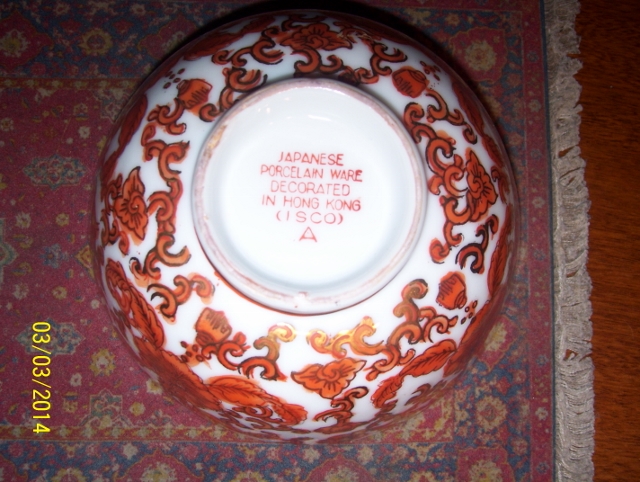When you think of Hong Kong, it’s easy to be swept away by the neon lights, bustling markets, and vibrant culture. However, nestled within this urban landscape is a treasure trove of art and craftsmanship, particularly in the realm of Japanese porcelain ware. As both a collector and an enthusiast, I invite you to explore the beautiful world of Japanese porcelain decorated in Hong Kong, sharing personal experiences, tips, and insights along the way.
The Art of Japanese Porcelain: A Brief History
Japanese porcelain has a rich history that dates back to the early 17th century, primarily with the famed Arita and Imari styles. These pieces are known for their intricate designs, vibrant colors, and impeccable craftsmanship. Over the centuries, Japanese artisans have mastered the art, leading to the exquisite porcelain we admire today.
Key Characteristics of Japanese Porcelain
- Material: Made from high-quality kaolin clay.
- Glazing Techniques: Unique glazing methods result in vivid colors.
- Decoration Styles: Traditional techniques include underglaze blue and overglaze enamel.
Why Hong Kong is a Hub for Japanese Porcelain
Hong Kong serves as a melting pot of cultures and traditions, making it an ideal location for the appreciation and trade of Japanese porcelain. The blend of Eastern and Western cultures allows for unique interpretations and adaptations of traditional Japanese designs.
Local Artisans and Shops
In Hong Kong, you’ll find numerous shops and local artisans dedicated to preserving and promoting Japanese porcelain. Here are some notable places:
Top Shops for Japanese Porcelain in Hong Kong
| Shop Name | Location | Specialty |
|---|---|---|
| Oriental Treasure | Tsim Sha Tsui | Antique and contemporary pieces |
| Yamato Shouten | Central | Hand-painted Arita ware |
| Shinwa Gallery | Mong Kok | Exhibition of rare pieces |

My Personal Experiences Visiting These Shops
Walking into these shops feels like stepping into a different world. The moment you enter, you are greeted by the stunning sights of porcelain wares, each telling a story through its intricate designs. At Oriental Treasure, I remember finding a beautiful set of tea cups that reminded me of my grandmother’s collection. Each piece resonated with nostalgia and artistry.
Types of Japanese Porcelain Decorated in Hong Kong
Among the various styles of Japanese porcelain, certain types stand out for collectors and enthusiasts alike.

Imari Porcelain
Imari porcelain, named after the port from which it was shipped, features bold colors and elaborate designs, often depicting floral and geometric patterns.
Arita Porcelain
Arita has a more delicate and refined aesthetic, known for its white base and intricate underglaze blue patterns.

Kutani Ware
Kutani ware is known for its vibrant colors and intricate designs, often incorporating motifs of nature and folklore.
Comparison of Styles
| Type | Characteristics | Best Uses |
|---|---|---|
| Imari | Bold colors, intricate designs | Display, tea sets |
| Arita | Delicate patterns, blue underglaze | Everyday use, ceremonial |
| Kutani | Vibrant colors, nature motifs | Dining, decorative pieces |

Collecting Japanese Porcelain: Tips for Beginners
As someone who has delved into the world of collecting Japanese porcelain, I’ve learned a few key tips that can help beginners avoid common pitfalls and make informed purchases.
Research Before You Buy
Familiarize yourself with various styles and historical periods of Japanese porcelain. Books, online resources, and community forums can provide valuable information.

Check for Authenticity
Look for markings that indicate authenticity. Many reputable shops will provide provenance details for higher-value pieces.
Never Rush a Purchase
Take your time to browse and compare pieces. It’s important to feel a connection with what you’re purchasing.

Pros and Cons of Collecting Japanese Porcelain
Pros
- Timeless beauty that enhances any space.
- Potential for value appreciation over time.
- A rich history associated with each piece.
Cons
- Can be expensive, especially for rare pieces.
- Risk of counterfeits in the market.
- Fragility requires careful handling and storage.
Maintaining and Caring for Japanese Porcelain
Proper care and maintenance are crucial to preserving the beauty of your Japanese porcelain. Here are some best practices:

Cleaning Tips
- Use a soft cloth to gently wipe surfaces.
- Avoid harsh cleaners that could damage glaze.
- Hand wash instead of using a dishwasher to prevent chipping.
Storage Recommendations
Store your porcelain in a stable environment—avoid areas with high humidity or extreme temperature changes. Consider using display cabinets with glass doors to minimize dust accumulation while showcasing your collection.
The Future of Japanese Porcelain in Hong Kong
As the demand for Japanese porcelain continues to grow in Hong Kong, local artisans are embracing innovation while respecting traditional techniques. This fusion of old and new may shape the future landscape of porcelain art in the city.
Emerging Trends to Watch
From contemporary design collaborations to eco-conscious practices in production, exciting developments are unfolding. These trends reflect a growing appreciation for craftsmanship and sustainability in the arts.
FAQs About Japanese Porcelain in Hong Kong
What is the best place to buy Japanese porcelain in Hong Kong?
Some of the top shops include Oriental Treasure, Yamato Shouten, and Shinwa Gallery, each offering a unique selection of porcelain pieces.
How can I tell if my Japanese porcelain is authentic?
Look for specific markings, evaluate the craftsmanship, and if possible, ask for provenance documentation from the seller.
Are there online resources for learning about Japanese porcelain?
Yes, numerous online communities, educational websites, and bookstores offer valuable insights into the history and types of Japanese porcelain.
Conclusion: The Lasting Allure of Japanese Porcelain
Japanese porcelain ware is not just a decorative piece; it embodies a rich cultural heritage and artistic excellence that continues to enchant collectors and enthusiasts in Hong Kong and beyond. As you venture into this fascinating world, remember to appreciate the craftsmanship and history behind each piece. Happy collecting!